- Clone
- SMI 37 (See other available formats)
- Regulatory Status
- RUO
- Other Names
- Neurofilament heavy polypeptide, NF-H, 200 kD neurofilament protein, neurofilament triplet H protein
- Previously
-
Covance Catalog# SMI-37R
- Isotype
- Mouse IgM, κ
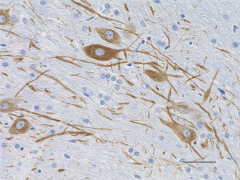
-

IHC staining of anti-Neurofilament H (NF-H) antibody (clone SMI 37) on formalin-fixed paraffin-embedded rat brain tissue. Following antigen retrieval using Retrieve-All Antigen Unmasking System 3: Acidic, 100X (Cat. No. 927601), the tissue was incubated with a 1:2000 dilution of the primary antibody for 60 minutes at room temperature. BioLegend's Ultra-Streptavidin (USA) HRP kit (Multi-Species, DAB, Cat. No. 929901) was used for detection followed by hematoxylin counterstaining, according to the protocol provided. The image was captured with a 40X objective. Scale bar: 50 µm -

IHC staining of anti-Neurofilament H (NF-H) antibody (clone SMI 37) on formalin-fixed paraffin-embedded mouse brain tissue. Following antigen retrieval using Retrieve-All Antigen Unmasking System 3: Acidic, 100X (Cat. No. 927601), the tissue was incubated with a 1:2000 dilution of the primary antibody for 60 minutes at room temperature. BioLegend's Ultra-Streptavidin (USA) HRP kit (Multi-Species, DAB, Cat. No. 929901) was used for detection followed by hematoxylin counterstaining, according to the protocol provided. The image was captured with a 40X objective. Scale bar: 50 µm -

Western blot of anti-Neurofilament H (NF-H) antibody (clone SMI 37). Lane 1: Molecular weight marker; Lane 2: 20 µg of human brain lysate; Lane 3: 20 µg of mouse brain lysate; Lane 4: 20 µg of rat brain lysate. The blot was incubated with a 1:2000 dilution of the primary antibody overnight at 4°C, followed by incubation with HRP labeled goat anti-mouse IgM. Enhanced chemiluminescence was used as the detection system.
| Cat # | Size | Price | Quantity Check Availability | ||
|---|---|---|---|---|---|
| 835801 | 100 µL | $375.00 | |||
Neurofilaments (NFs) are ~10 nanometer, type IV intermediate filaments expressed in neurons. NFs are the major components of the neuronal cytoskeleton, and primarily function to provide structural support for axons and regulate axonal diameter. There are three major mammalian neurofilament subunits which are named based on their apparent molecular weight: 1) neurofilament light (NF-L, ~70 kD), 2) neurofilament medium (NF-M, ~145-160 kD), and 3) neurofilament heavy (NF-H, ~200-220 kD). Neurofilaments are extensively phosphorylated, and their phosphorylation status plays an important role in modulation of their function. Abnormal NF modifications, mutations, and accumulation have been associated with neurodegenerative diseases. NF immunostaining is commonly used as a diagnostic marker for neuropathology detection. NFs are also useful for differentiating neurons (positive for NF) from glia (negative for NF).
Product Details
- Verified Reactivity
- Human, Mouse, Rat
- Antibody Type
- Monoclonal
- Host Species
- Mouse
- Formulation
- Ascites Fluid (contains 0.01M sodium azide).
- Preparation
- Ascites
- Concentration
- The concentration is not quantified as this product is sold as undiluted crude mouse ascites fluid. The concentration might vary from lot-to-lot and an estimated concentration would be 1-3 mg/ml.
- Storage & Handling
- Store at -20°C. Upon initial thawing, apportion into working aliquots and store at -20°C. Avoid repeated freeze-thaw cycles to prevent denaturing the antibody. For long-term storage, keep the antibody at -80°C.
- Application
-
IHC-P - Quality tested
WB - Verified - Recommended Usage
-
Each lot of this antibody is quality control tested by formalin-fixed paraffin-embedded immunohistochemical staining. For immunohistochemistry, a dilution range of 1/1000 - 1/2000 is suggested. For Western blotting, the suggested use of this reagent is 1/1000 - 1/2000. It is recommended that the reagent be titrated for optimal performance for each application.
- Application Notes
-
SMI 37 reacts with a nonphosphorylated epitope in neurofilament H of most mammalian species. Immunocytochemically, SMI 37 visualizes some neuronal cell bodies, dendrites and thick axons in the central and peripheral nervous systems. SMI 37 staining is more restricted than that seen with SMI 32 or SMI 38 and Neuronal cell bodies are intensely stained while neuronal processes staining is less prominent.
-
Application References
(PubMed link indicates BioLegend citation) -
- Petzold A, et al. 2011. Brain 134:464. (WB) PubMed
- Product Citations
-
- RRID
-
AB_2565353 (BioLegend Cat. No. 835801)
Antigen Details
- Cell Type
- Mature Neurons
- Biology Area
- Cell Biology, Neuroscience, Neuroscience Cell Markers
- Molecular Family
- Intermediate Filaments
- Gene ID
- 4744 View all products for this Gene ID
- UniProt
- View information about Neurofilament H on UniProt.org
Other Formats
View All Neurofilament H (NF-H) Reagents Request Custom Conjugation| Description | Clone | Applications |
|---|---|---|
| Anti-Neurofilament H (NF-H) | SMI 37 | IHC-P,WB |
| Purified anti-Neurofilament H (NF-H) | SMI 37 | IHC-P,WB |
Compare Data Across All Formats
This data display is provided for general comparisons between formats.
Your actual data may vary due to variations in samples, target cells, instruments and their settings, staining conditions, and other factors.
If you need assistance with selecting the best format contact our expert technical support team.
-
Anti-Neurofilament H (NF-H)
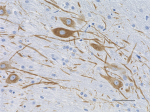
IHC staining of anti-Neurofilament H (NF-H) antibody (clone ... 
IHC staining of anti-Neurofilament H (NF-H) antibody (clone ... 
Western blot of anti-Neurofilament H (NF-H) antibody (clone ... -
Purified anti-Neurofilament H (NF-H)
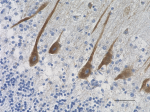
IHC staining of purified anti-Neurofilament H (NF-H) antibod... 
IHC staining of purified anti-Neurofilament H (NF-H) antibod... 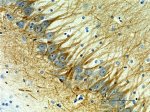
IHC staining of purified anti-Neurofilament H (NF-H) antibod... 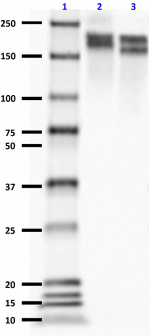
Western blot of purified anti-Neurofilament H (NF-H) antibod...
